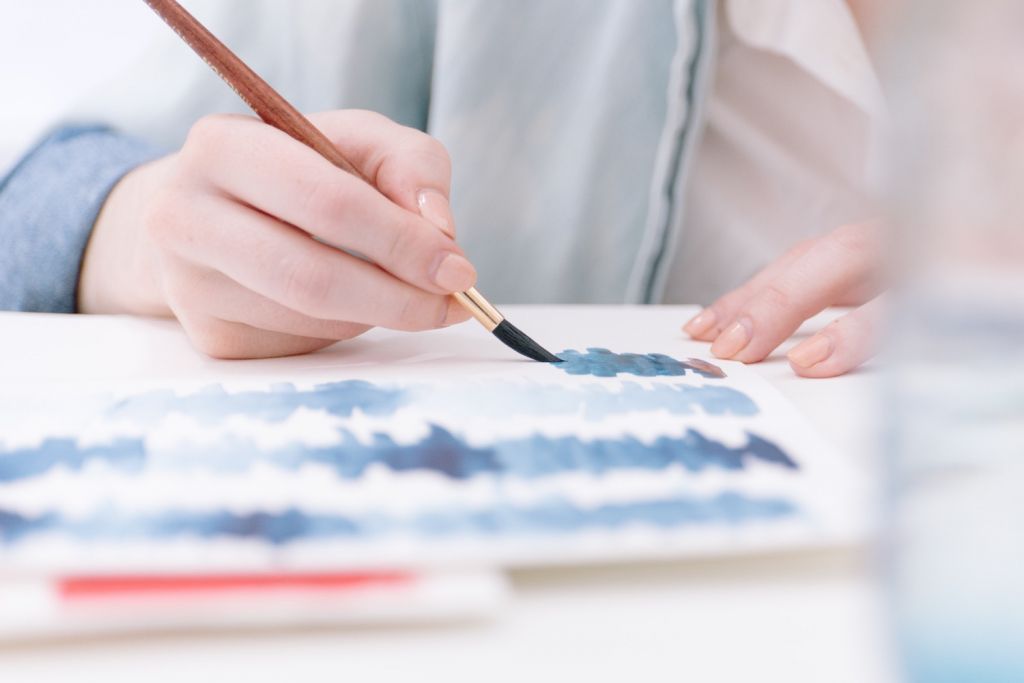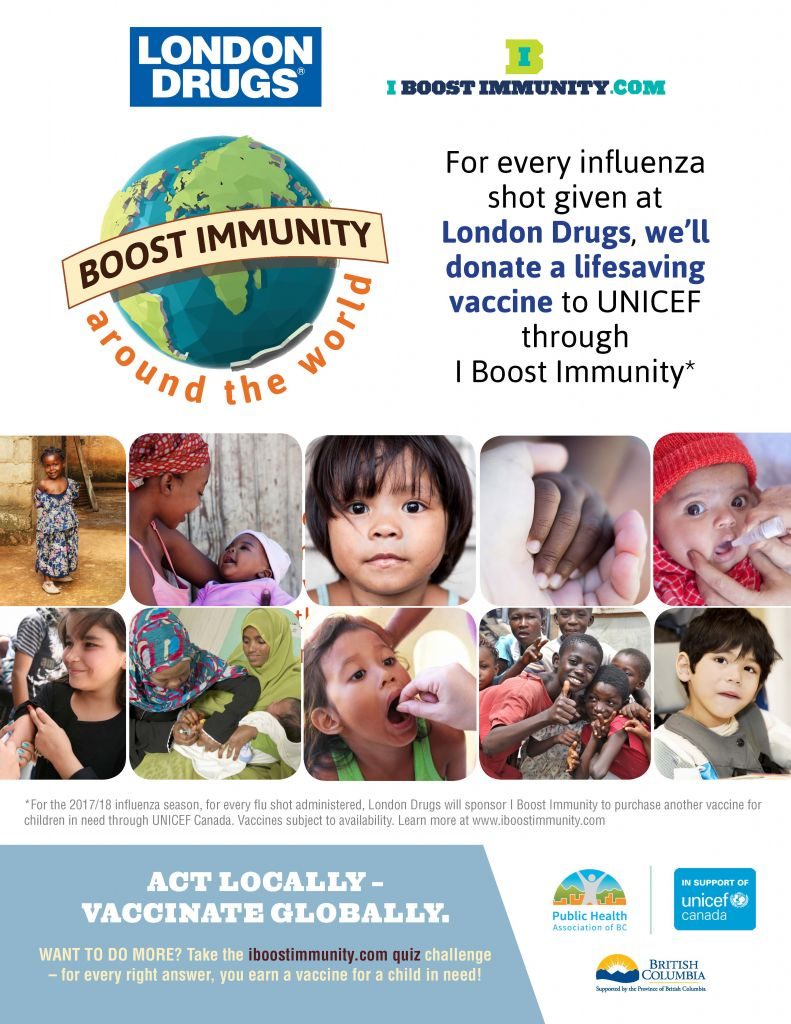
At London Drugs, the well being of our customers is our primary goal. We demonstrate our commitment to that goal through our dedication to serving your healthcare needs.
If you have any questions about your medications or health conditions, please ask your pharmacist to set up a private consultation or browse through our wide array of health education materials.
Skin provides our first line of defense against the world around us, and yet we so often abuse it without even a second thought. Every time we go outdoors we expose our skin to the harmful effects of the sun’s rays.
And just what makes the sun so dangerous? Sunlight contains ultraviolet radiation that is very damaging to the skin. Although many people still think of a tan as a sign of health, it is actually a sign of skin damage. A change in skin colour means that your body has been unable to cope with the amount of sun it has gotten, and it has produced extra amounts of the chemical that colours skin in attempt to limit further damage. And the damage from the sun is cumulative with each successive exposure.
Sun damage can range from the pain and blistering of a sunburn to the wrinkled, saggy appearance caused by photoaging to the most serious problem of all: skin cancer. More than 90% of all skin cancers occur on the parts of the body that are subjected to repeated sun exposure.
Health Canada warns that skin cancer is the most common form of cancer in Canada and that the primary factor that increases the risk of developing it is excessive exposure to the sun’s UV radiation. Skin cancer is largely preventable if sun protective practices are used, and we have developed this booklet to give you the information you need to protect your skin from the ravages of sun damage.
The Myth of the ‘Healthy Tan’
Medical science has long been aware that prolonged exposure to sunlight, especially during childhood, can cause premature aging of the skin and, ultimately, skin cancer. Yet the myth of a “healthy tan” persists.
If you learn only one thing from this booklet, let it be the fact that there is no such thing as a healthy tan. The skin discolouration we refer to as a tan is, in itself, a sign of skin damage.
How the Sun Damages the Skin
The sun emits ultraviolet (UV) radiation in the form of UVA, UVB, and UVC rays.
- UVA: UVA rays penetrate deeply into the skin and cause damage that leads to premature aging.
- UVB: UVB rays damage the outer layer of the skin and cause sunburn.
- UVC: UVC rays are absorbed by the ozone layer, so they do not reach the earth’s surface.
The ozone layer currently blocks out most of the sun’s harmful UV rays, but with the thinning of the ozone layer, there is concern that more of the sun’s radiation will reach the earth’s surface in the future.
The Canadian Cancer Society reports that the risk of developing skin cancer today is much greater than it was 20 years ago. In addition to the thinning ozone layer, the primary reason for this is the outdoor lifestyle many people have adopted. We spend more time working outside and more of our recreational activities take place outdoors. As a consequence, skin cancer is increasing at an alarming rate. The Canadian Cancer Society estimates that there were more than 75,000 new cases of non-melanoma skin cancer and 5,000 cases of melanoma diagnosed in 2009.
The UV Index
Because the effects of sun exposure are cumulative, the more time you spend in the sun during your lifetime, the greater your risk of developing sun-related health problems such as skin damage and cataracts.
Environment Canada has developed the UV Index to help us determine our exposure. The index indicates the intensity of UV radiation on a scale from low (UV index of 0 to 2) to extreme (UV index of 11 or above). The higher the UV index is, the stronger the sun’s rays are and the greater the need to take precautions.
| UV Index | What It Means |
| 0-2 | Low |
| 3-5 | Moderate |
| 6-7 | High |
| 8-10 | Very High |
| 11 and above | Extreme |
Types of Sun Damage
The sun’s ultraviolet rays can damage the skin in many ways, including the following:
- Sunburn causes tenderness, pain, swelling, and blistering.
- Sun exposure leads to premature aging of the skin. Over time, unprotected skin exposed to the sun becomes more wrinkled, saggy, leathery, and blotchy than protected skin. Damage to the deeper layers of the skin also results in loss of skin elasticity. This process is separate from the normal aging process.
- Some people can develop allergies to the sun after short periods of sun exposure,
causing bumps, hives, blisters, or red blotchy areas. - About 70% of pregnant women develop a condition called melasma or chloasma,
more commonly known as “the mask of pregnancy,” which shows up as dark
patches of skin on the face following sun exposure. It is due to an excess of
melanin in the skin caused by surging estrogen levels. - Melasma can also affect women who aren’t pregnant, especially those on birth
control pills or who experience hormone fluctuations and those with certain
hormone problems. - The sun can cause unsightly red, yellow, grey, or brown spots and scaly growths
(actinic keratoses) that may develop into skin cancer. - And the most serious problem of all: skin cancer. More than 90% of all skin cancers
occur on parts of the body exposed to the sun. The face, neck, ears, forearms,
chest, back, legs, and hands are the most common sites.
The skin isn’t the only organ to suffer from sun damage. Here are some of the other developments sun worshippers have to look forward to:
- UV radiation can cause eye damage including cataracts, one of the leading causes of blindness.
- Even short periods of sun exposure can damage the immune system and make the body more susceptible to infections and cancers.
- Some diseases become worse with sun exposure including herpes simplex (cold sores), chicken pox, lupus, and certain genetic problems.
Skin Cancer: What You Need to Know
Skin cancer is by far the most common type of cancer. There are three different forms of skin cancer: basal cell, squamous cell, and melanoma. Most skin cancers are either basal cell or squamous cell. When they are detected promptly and treated in the earliest stages, treatment is successful in about 90% of cases. Basal cell cancers usually appear on sun-exposed areas of the body—most commonly the face and neck, but also on the trunk, arms, and legs. The appearance of this type of cancer varies from person to person. Squamous cell cancers most often appear as thickened, red, scaly bumps or wart-like growths, but they can also look like an open sore or crusted skin.
Melanomas—which account for about 6% of cases—are a much more serious form of skin cancer, and the only effective treatment is early detection and prompt surgical removal. Melanoma often begins as a mole-like growth that may become itchy or bleed. It is usually a dark brown but may be mixed with areas of white, pink, blue, or grey. It can change shape, grow larger, or even change colour.
Any time you notice a new spot on your body or an old spot that changes, especially if it bleeds easily, you should consult your doctor. If you have spent much time in the sun, you should learn the “ABCDEs” of spotting a melanoma:
- A is for asymmetry. If you draw a line through the centre spot, the halves will not be identical.
- B is for their borders. The edges will be uneven, scalloped, or notched. C is for their colour. There can be a variety of shades (brown, red, white, blue, or black).
- D is for their diameter. The distance across the spot will be greater than 6 mm – about the size of the eraser on the end of a pencil.
- E is for evolution. This refers to any change in size, colour, shape, or height of the spot or the development of a new symptom such as bleeding, itching, or crusting.
Risk Factors for Skin Cancer
The most significant risk factor for developing skin cancer is exposure to the sun’s ultraviolet rays. The skin can repair superficial damage such as the redness of a sunburn, but the underlying damage remains and accumulates with each successive sun exposure. However, the damage may not become apparent for 20 or 30 years. While UV radiation damages everyone’s skin, some people are more likely to develop skin cancer than others. The following factors increase a person’s risk. If any of these apply to you, you should consider taking special precautions when spending time in the sun. The Canadian Cancer Society estimates that about 60% to 70% of skin cancer cases in Canada could be avoided if people adopted safer lifestyles.
- Skin colour: fair
- Hair colour: blond or red
- Eye colour: blue, green, or hazel
- Having many moles, freckles, or birthmarks
- Sunburn easily
- Having had a serious sunburn, especially during childhood
- Spending a lot of time in the sun, especially as a child
- A family history of skin cancer
- Tanning in the sun, a tanning salon, or with a sunlamp
- A history of keratoses (non-cancerous growths on the skin)
- A history of immune disorders
- Treatments for previous skin disorders
- Severe skin damage, including burns
- Taking certain medications that make your skin more sensitive to the sun
Monthly Skin Self-Examinations
One of the most efficient methods of detecting skin cancer and ensuring its prompt treatment is to perform a monthly skin self-examination. When you perform this exam, you should look for:
- Any change in the shape, colour, size, or surface of a birthmark or a mole
- Any new growths on your skin
- Any sore that doesn’t heal
- Any patch of skin that bleeds, oozes, swells, itches, or becomes red and bumpy
The best way to perform a skin self-examination is to stand naked in front of a full-length mirror and use a hand-held mirror to help you view every inch of your skin. It can also be helpful if there is someone available to assist you in checking the difficult-to-access areas such as the back of your neck and legs and behind your ears.
Check your whole body—front, back, and sides. Look carefully at your hands, including the palms, at both the tops and undersides of your arms, and at the front and back of your legs. Look between your buttocks and around your genital area. Examine your feet, including the soles and spaces between your toes. Check your face, neck and scalp, moving your hair if necessary to get a good look.
If you find anything unusual or if you are unsure or confused by what you find, see your doctor.
Self-Defense: Protecting Yourself from Sun Damage
Protecting yourself from sun damage begins with shielding your skin from damaging ultraviolet radiation. And that means using a sunscreen every time you go outdoors. There are two different types of sunscreens: chemical blocks and physical blocks. Chemical blocks work by absorbing the ultraviolet rays before they reach your skin. Physical blocks form a physical barrier that acts like a mirror to reflect the rays away from your skin. The choice of which kind to use will depend on what you like and what type of skin you have.
Once you have decided on the type of sunscreen you want, the next step is to decide how much protection you need. Sunscreens are rated by a system called sun protection factor, or SPF for short. The higher the SPF rating, the longer the protection will last. The Canadian Dermatology Association recommends that you look for a product with a minimum SPF of 30 to protect against the sun’s UVB rays plus ingredients that protect against UVA. Sunscreens labelled as “broad spectrum” help protect against both kinds of radiation.
An SPF 15 means the sunscreen gives you 15 times as much protection as your natural skin colouring. If your skin normally turns red after 20 minutes in the sun, a sunscreen rated SPF 15 will prevent sunburn for 15 times as long, i.e., 300 minutes (5 hours). However, it is important to remember that no sunscreen gives complete protection against all of the damaging rays, and no sunscreen will be effective if it isn’t used properly. Also remember that swimming and perspiring remove some sunscreen, so be sure to reapply the product as needed.
Here are some general guidelines for sunscreen use:
- Apply chemical sunscreens about 30 minutes before going out in the sun, because they must be absorbed into the skin. (There is no need to wait if you use a physical barrier sunscreen.) A second application 20 minutes after going outdoors will increase the protection.
- Use a generous amount and use it on all exposed areas of your skin. Don’t forget your ears, around your eyes, your neck, the tops of your feet, and your bald spot if you have one.
- Rub it in thoroughly to ensure even coverage.
- Reapply the sunscreen every few hours. Read the labels carefully; some sunscreens provide protection for longer than others.
- Reapply the sunscreen after swimming or perspiring, even if you are using a waterproof product.
- Use your sunscreen all year long, even in cloudy or foggy weather. And remember, the effects of UV radiation can be magnified by as much as 40% by the sun’s rays reflecting off snow.
While sunscreens are very important, they are not the whole story. The delicate skin of the lips requires protection as well. Look for a lip balm that has an SPF rating and wear it when you go outdoors. Sunglasses that protect against both UVA and UVB rays are also important and will help reduce the increased risk of developing cataracts caused by exposure to the sun.
When outdoors, wear protective clothing made of lightweight, tightly-woven fabrics and a hat—preferably one with a wide brim. Whenever possible, choose a shady spot. If natural shade isn’t available, create some with an umbrella.
Other protective measures you can take include:
- Avoid sunbathing and tanning salons.
- Perform a skin self-exam every month to check for signs of skin cancer. If you see anything that looks unusual, consult your doctor.
- Some medications make you especially sensitive to the sun. If you take any medicines, ask your pharmacist if you need to take special precautions.
- Remember, what is important for adults is critical for children, whose skin is much more delicate. In fact, children under one year old should never be exposed to direct sunlight. Older children should always wear a sunscreen, hat, and protective clothing.


 Be organized:
Be organized:










